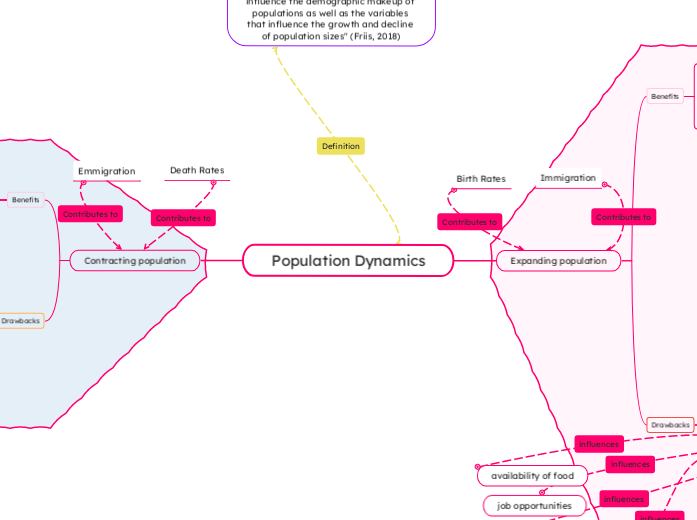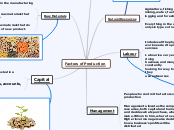Immigration
Birth Rates
References:
Casey, G., & Galor, O. (2017). Is faster economic growth compatible with reductions in carbon emissions? The role of diminished population growth. Environmental research letters: ERL [Web site], 12(1), 10-1088.
Friis, R. H. (2018). Essentials of environmental health. Jones & Bartlett Learning.
Wilmoth, M. J., Menozzi, M. C., & Bassarsky, M. L. (2022). Why population growth matters for sustainable development.
Death Rates
Emmigration
job opportunities
lifestyle considerations
availability of food
escape from political conflict
industrialization
"the ever-changing interrelationships among the set of variables that influence the demographic makeup of populations as well as the variables that influence the growth and decline of population sizes" (Friis, 2018)
From a global perspective contracting populations are easier to manage because natural, political, economic, and other resources are not under increasing strain as in the case of rapidly growing populations (Friis, 2018). In this scenario, it is important to determine the cause of the rising death rates and/or falling fertility rates. Determining this would allow for multifaceted intervention approaches to be curated and applied.
Determine why death rates are rising
low fertility
policies in place limiting fertiltiy (Zeng & Hesketh, 2016)
pollution or other contaminants causing decreased functioning of the reproductive system
not as many babies are being born so the population is aging
economic decline
decreased job opportunities
people not having enough money to support children
disease or illness that is killing the population
Population Dynamics
Contracting population
population aging
Less people finding someone suitable to marry
more instances of aggression towards women (Zeng & Hesketh, 2016)
not as many marriages that produce children
more people are aging alone
Less people have family members to take care of them when they age
high rates of mental illness/loneliness
higher healthcare and insurance costs
fewer people to contribute to society
stunted economic growth
decreased population density
reduced spread of communicable diseases
less pollution
healthier popultion
ease stresses on natural resources
adequate food, water, shelter, etc
more equal opportunities between men and women (Wilmouth et al., 2022)
more women are employed
women are marrying later
women are having few children
children benefit (Zeng & Hesketh, 2016)
Expanding population
Drawbacks
Women are having more children
increase fetal and maternal mortality
Urbanization (Friis, 2018)
population density increase
more people fall undle the poverty line
greater taxation to support the needs of the growing population
unequal opportunities between men and women
increased air pollution
increased carbon emissions (Casey & Galor, 2017)
poor sanitation
stress on food supply
Crime rate goes up because people will resort to illegal methods of getting the food they need
soil erosion
increased sedimentation in water sources
flood risk
increased prevalence of malnutrition and starvation
increase spread of infectious/communicable disease
Destroying the environment (Friis, 2018)
pollution of air, water, etc
deforestation
dwindling supplies of fire wood
desertification
depletion of resources
Benefits
more people contributing to society
growth/innovation
more consumers
economic growth
greater efficency
medical and scientific discoveries
technological advances
population age shifts to younger
healthier population
lower healthcare and insurance costs









